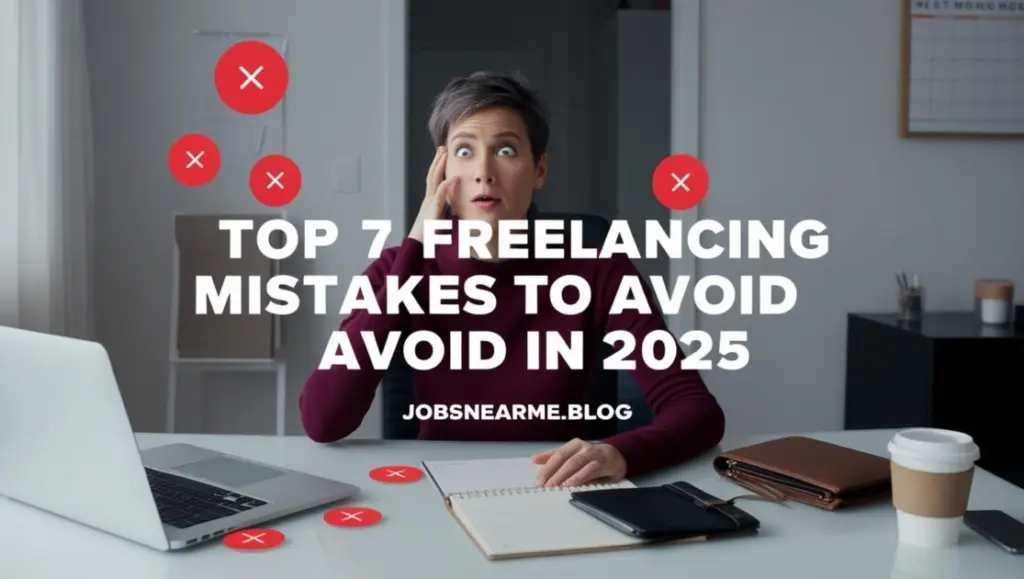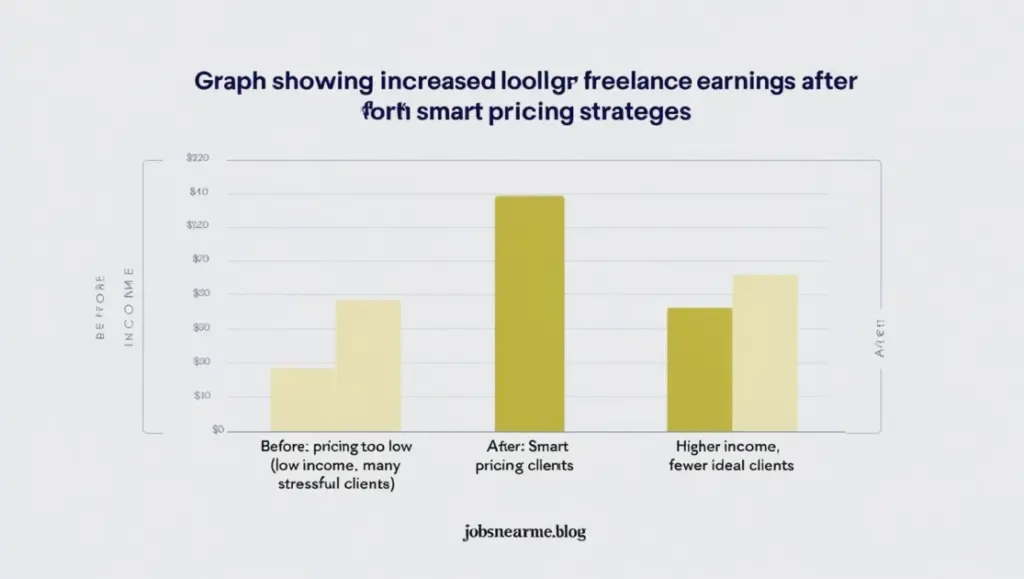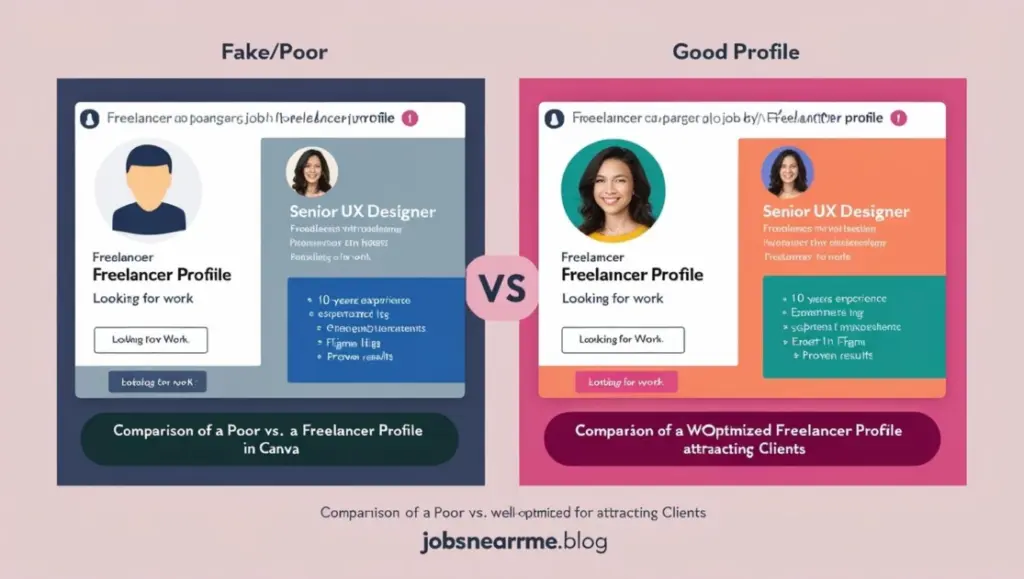Starting your freelancing journey is incredibly exciting – the dream of being your own boss, setting your own hours, and working on projects you’re passionate about. But let’s be honest, it’s also a path riddled with potential pitfalls, especially when you’re just starting out. From the paralyzing fear of pricing too low to the chaos of juggling clients without a system, new freelancers often make critical mistakes that can severely hurt their growth and even lead to early burnout.
If you’re nodding along, feeling a mix of excitement and trepidation for your 2025 freelancing launch, you’re in the right place. In this comprehensive guide, we’ll reveal the 7 most common freelancing mistakes beginners make. More importantly, we’ll arm you with simple, actionable strategies to avoid them and grow faster — even if you’re starting from absolute scratch. Let’s turn those beginner blunders into building blocks for success!
1. Why Freelancers Fail Early (The Harsh Truth)
The allure of freelancing is strong, but the reality can be a wake-up call. Many aspiring freelancers dive in headfirst, only to find themselves struggling. Why is that?
- No one teaches you the “business” side: You might be a fantastic writer, a brilliant designer, or a coding wizard, but freelancing isn’t just about your skill. It’s about running a mini-business. Marketing, sales, negotiation, project management, invoicing – these are often learned the hard way.
- Most rely on trial and error (costly + slow): Without guidance, beginners often stumble through their initial months, making easily avoidable errors. This trial-and-error approach isn’t just slow; it can be costly in terms of lost income, wasted time, and damaged confidence.
- Platforms like Upwork, Fiverr don’t warn you about these traps: While freelancing platforms offer opportunities, they are marketplaces. They don’t inherently guide you on sustainable business practices. It’s easy to fall into platform-specific traps like price wars or becoming overly dependent.
Understanding these underlying challenges is the first step to proactively building a resilient freelance career.
2. Top 7 Freelancing Mistakes (And How to Avoid Them)

Let’s dive into the specific mistakes that can trip up even the most talented beginners.
Mistake #1: Charging Too Little Just to Get Hired
It’s tempting, isn’t it? You’re new, you want experience, you want any client. So, you drastically undervalue your services. “I’ll just charge a little less to get my foot in the door,” you think.
- Problem: Low pricing attracts low-quality clients who are often demanding, disrespectful of your time, and less likely to value your expertise. It also sets a precedent that’s hard to break, leading to a cycle of overwork and underpayment. You’ll burn out chasing pennies.
- Fix: Shift to value-based pricing. Focus on the results and value you deliver to the client, not just the hours you spend. Create compelling case studies (even from mock projects initially) that showcase your impact. Research industry standards and don’t be afraid to charge what you’re worth.
- Bonus Tip: Use hourly rate calculators like those offered by Bonsai to get a baseline, but always tailor it to the project’s value.

Mistake #2: Not Having a Niche
“I can do anything!” While versatility seems like a strength, in the crowded freelance marketplace, being a generalist often means you’re a master of none.
- Problem: You blend in with 10,000 other generalists. Clients looking for specific solutions will overlook you for someone who clearly specializes in their exact need. It’s harder to build expertise and command higher rates.
- Fix: Specialize in 1–2 skills or a specific industry. For example, instead of “writer,” become a “SaaS Copywriter for B2B Tech Companies” or a “Shopify Developer for E-commerce Startups.” This makes you more memorable and sought-after.
- Tool: Use LinkedIn to research professionals in your desired niche. Optimize your LinkedIn title and profile with niche-specific keywords to attract the right clients. For instance, if you’re targeting writing roles, your profile should scream “expert freelance writer.”
Ready to find clients in your new niche? You can explore opportunities like:
Mistake #3: Relying on One Platform (e.g. Only Fiverr or Upwork)
Getting all your clients from a single freelancing platform might feel convenient at first. But what happens if that platform changes its algorithm, increases fees, or worse, suspends your account?
- Problem: Platform bans or policy changes can mean zero income overnight. You’re building your business on rented land, and you have little control.
- Fix: Diversify your client acquisition channels. Explore LinkedIn for networking and direct outreach, consider cold outreach to businesses you admire, and build your own professional portfolio site to showcase your work independently.
- Bonus: Build an email list from day one. Offer a valuable freebie (e.g., a checklist, a short guide) on your portfolio site to capture email addresses. This is an audience you own and can communicate with directly.
Mistake #4: Poor Client Communication
Once you’ve landed a client, the work isn’t over. How you communicate can make or break the relationship and your reputation.
- Problem: Ghosting clients, providing unclear updates, or missing deadlines leads to frustration, scope creep, and ultimately, bad reviews or lost repeat business. Misunderstandings can escalate quickly.
- Fix: Establish clear communication protocols from the start. Use project management tools like Notion or Trello to keep clients in the loop. Send regular (e.g., weekly) updates on progress. Always over-communicate rather than under-communicate.
- Pro Tip: After every important call or meeting, send a summary email to confirm expectations, deliverables, and next steps in writing. This creates a paper trail and ensures everyone is on the same page.
Mistake #5: Not Having Contracts or Clear Payment Terms
“It’s just a small project; we don’t need a contract.” Famous last words of many a frustrated freelancer.
- Problem: Without a contract, you’re vulnerable to late payments, unpaid invoices, and endless scope creep (clients asking for more work than initially agreed upon without additional compensation).
- Fix: Always use a contract, no matter how small the project or friendly the client. Use professional templates from services like Bonsai or AND.CO.
- Include: Clearly define project deliverables, timelines, payment schedules, revision rounds, and importantly, a late fee clause for overdue payments. Also, outline the process for handling additional requests (scope creep).
Looking for roles where good contracts are key? Consider these specialized areas:
Mistake #6: Skipping Portfolio or Personal Branding
“I’ll build my portfolio once I get more clients.” But how will you get those clients without proof of your skills?
- Problem: No proof = no trust. Clients are taking a risk hiring a freelancer, especially a new one. A strong portfolio and personal brand mitigate that risk. Without them, you’re just a name on a list.
- Fix: Create mini-case studies for every project you complete. If you’re just starting, create mock projects or offer pro-bono/discounted work to build initial samples. Focus on showing the process and the results, not just the final product.
- Easy: Use accessible platforms like Notion, Behance, GitHub (for developers), or even Canva to create a visually appealing and professional portfolio. Your personal brand is also reflected in your communication style, your website, and your social media presence. Make it consistent and professional.

Mistake #7: Burning Out by Taking Every Gig
When you’re new and eager (or desperate) for income, it’s easy to say “yes” to every project that comes your way, regardless of pay, interest, or alignment with your goals.
- Problem: Overwork leads to low-quality output, missed deadlines, and eventual burnout. You’ll also have no time or energy for skill development, marketing, or finding better clients. This isn’t sustainable.
- Fix: Set clear work hours and boundaries. Learn to say no to gigs that are poorly paid, outside your niche, have too many red flags, or simply don’t excite you. It’s okay to be selective; this allows you to focus on high-value work.
- Reminder: Freelancing is a long-term game, not a sprint. Protect your energy and well-being to build a career you love, not one you resent.
Perhaps you’re ready to find those aligned gigs now?
3. Tools to Help Beginners Avoid These Mistakes
Navigating the freelance world is easier with the right toolkit. Here are some essentials:
| Tool | Purpose |
| Bonsai | Invoicing, Proposals, Contracts, Time Tracking |
| Notion | Project Management, Client Portals, Portfolio |
| Loom | Quick client updates via video, tutorials |
| Canva | Portfolio building, Social Media Graphics |
| Upwork/LinkedIn | Lead generation, Networking |
| Clockify/Toggl Track | Free Time Tracking |
| Google Workspace | Email, Calendar, Document Management |
These tools can help streamline your workflow, present a professional image, and manage the “business” side of freelancing more effectively.
People Also Ask (FAQs)
What are the most common freelancing mistakes for beginners?
The most common include underpricing, not niching down, relying on one client source, poor communication, skipping contracts, neglecting a portfolio, and taking on every project leading to burnout.
How do I price my freelance services as a beginner in 2025?
Research industry rates, consider value-based pricing (focus on client results), factor in your expenses and desired income, and don’t be afraid to start with a slightly lower (but not rock-bottom) rate for your first few portfolio-building projects, then increase as you gain experience and testimonials.
How can I get freelance clients outside Fiverr or Upwork?
Network on LinkedIn, build a professional portfolio website, use cold outreach (email or LinkedIn), ask for referrals from existing clients, and engage in relevant online communities.
Is freelancing hard for beginners in 2025?
Freelancing has a learning curve. It requires discipline, business acumen, and proactive marketing. While there are challenges, it’s very achievable with the right strategies, a willingness to learn, and persistence. The demand for skilled freelancers remains strong in 2025.
What should I include in a freelance contract?
A freelance contract should include: names and contact information of both parties, a detailed scope of work, project deliverables, deadlines, payment terms (rate, schedule, methods), revision rounds, ownership of intellectual property, confidentiality clauses, termination clauses, and a late payment penalty clause.
Your Freelancing Success Story Starts Now!
Embarking on your freelance journey in 2025 is a bold and exciting move. Yes, there are hurdles, and these seven mistakes are common, but they are not insurmountable. By understanding these pitfalls and proactively implementing the strategies we’ve discussed, you can sidestep much of the frustration that plagues new freelancers.
Remember, freelancing is a marathon, not a sprint. It’s about building a sustainable business that supports your lifestyle and professional goals. Don’t let fear of these mistakes hold you back. Instead, use this knowledge as your secret weapon.
Ready to put these lessons into practice and find your first (or next) freelance opportunity? Don’t just dream about freelance success – start building it. Explore thousands of freelance roles and connect with clients who value your skills.
➡️ Click here to find Freelance Jobs and Kickstart Your Journey!
Take that first step with confidence. You’ve got this!




